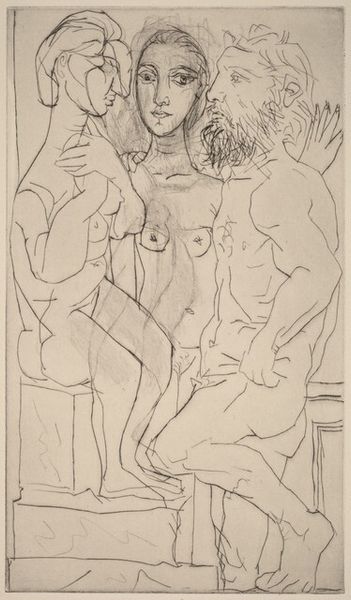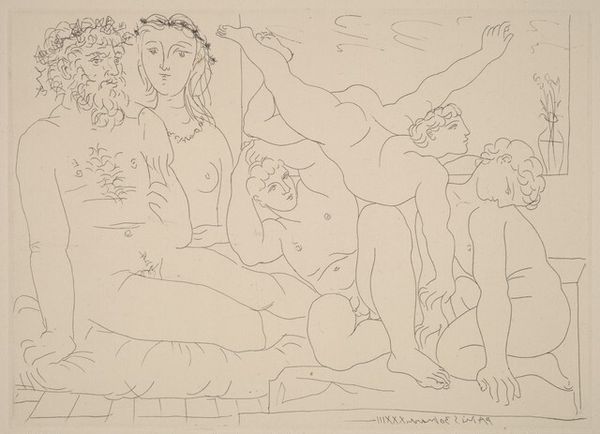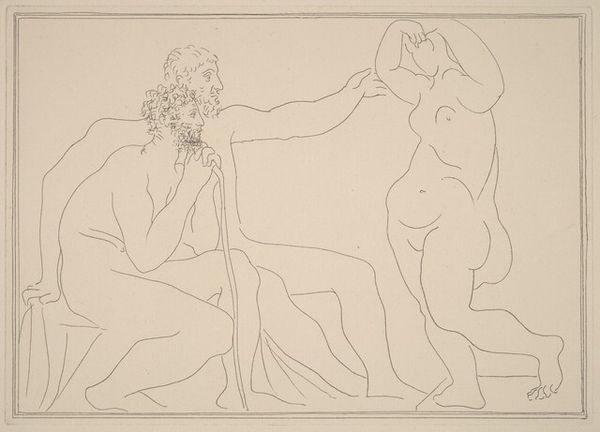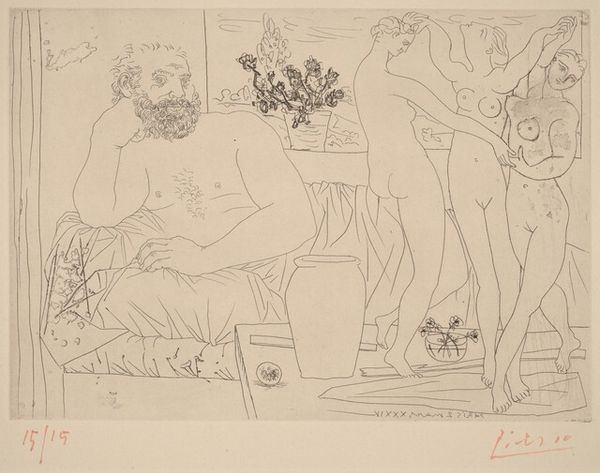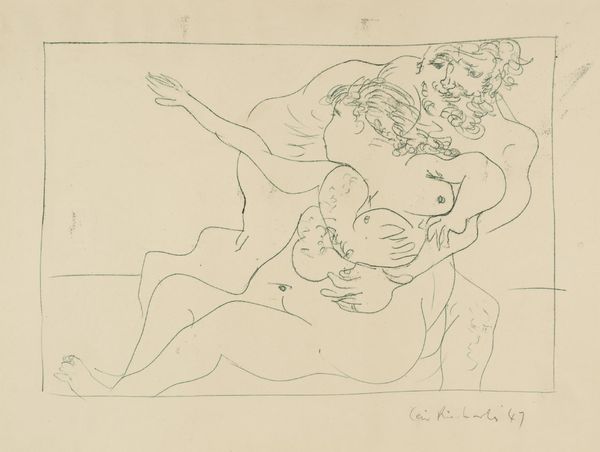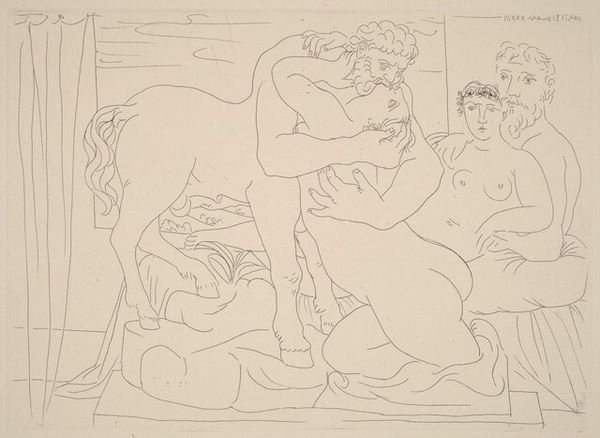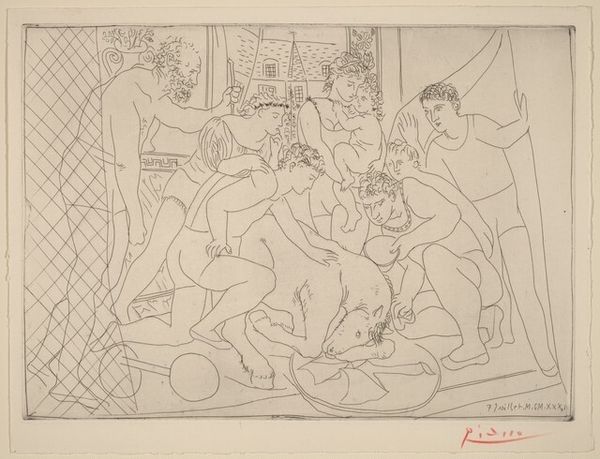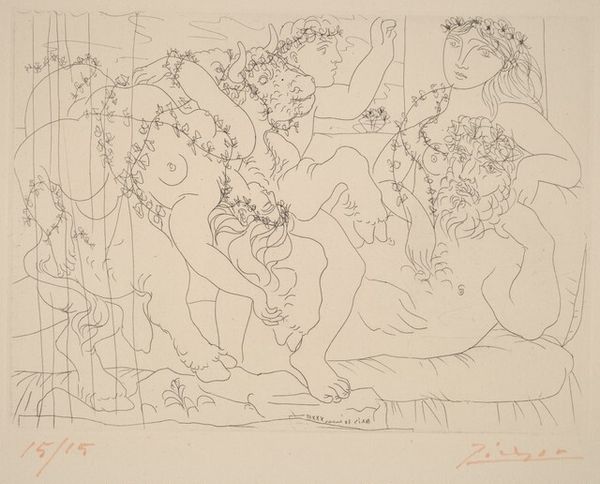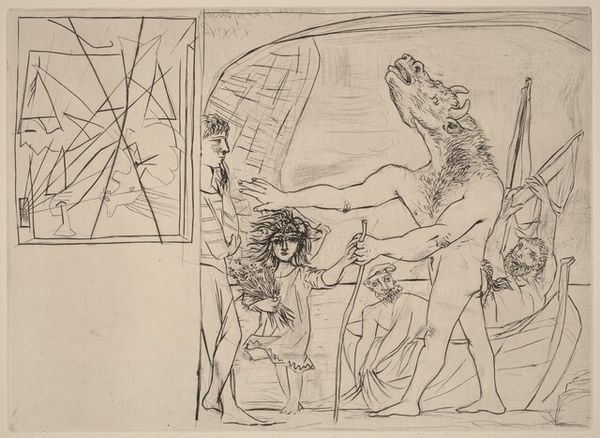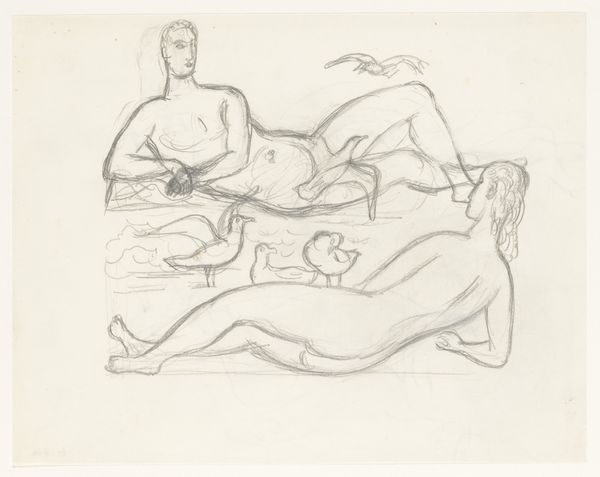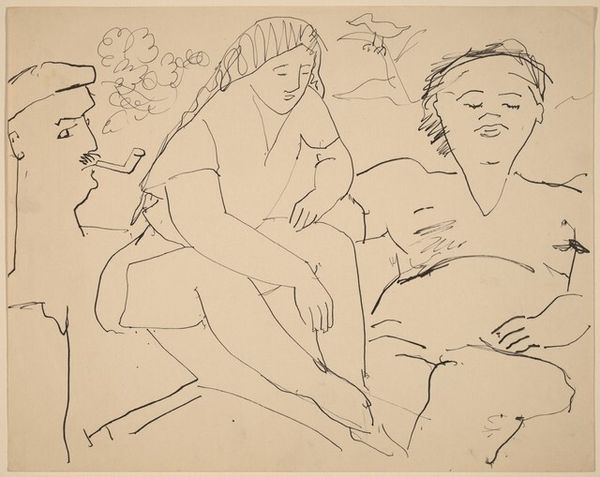
Sculptors, Models, and Sculpture (Sculpteurs, modèles et sculpture) 1933
0:00
0:00
drawing, print, ink
#
portrait
#
17_20th-century
#
drawing
#
cubism
#
ink drawing
# print
#
caricature
#
figuration
#
form
#
ink
#
group-portraits
#
line
#
portrait drawing
#
nude
#
modernism
Dimensions: plate: 19.5 x 26.6 cm (7 11/16 x 10 1/2 in.) sheet: 38.9 x 50.5 cm (15 5/16 x 19 7/8 in.)
Copyright: National Gallery of Art: CC0 1.0
Editor: This is Pablo Picasso's "Sculptors, Models, and Sculpture" from 1933, done in ink. The figures, the lack of shading and fine details make it appear simple at first, but there's a complexity to the arrangement of bodies and lines. What stands out to you in its composition? Curator: Immediately, I am struck by the interplay between line and form. Consider the stark contrast: The fluid, almost lyrical lines defining the human figures exist in dialogue with the more geometrically defined sculpture to the right. What effect do you think that contrast creates? Editor: It's like he's using different visual languages on the same plane. The sculpture looks so static, in comparison. Curator: Precisely. Observe how Picasso utilizes line weight and density to differentiate planes and textures, from the delicate cross-hatching implying depth to the bold outlines that flatten the figures. This imbues the work with a visual dynamism. Where do you think our eyes are meant to travel, given this dynamic interplay? Editor: My eye jumps from the group of figures to the sculpture and back again. The artist used similar visual language with both, but they are far enough apart to encourage wandering... almost like two distinct pieces of the same idea? Curator: Good eye. Reflecting on how Picasso manipulates line to create form and tension really gives an incredible dimension to this deceptively simple work, doesn't it? Editor: It does. Thinking about it in terms of line, weight, and composition definitely brought out the nuances I was missing.
Comments
No comments
Be the first to comment and join the conversation on the ultimate creative platform.
